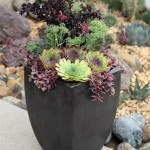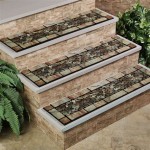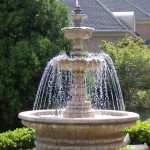How To Care For Outdoor Plants: A Comprehensive Guide
Cultivating a thriving outdoor garden requires understanding and addressing the specific needs of each plant. Factors such as sunlight, water, soil type, and climate play crucial roles in plant health and growth. This guide provides a comprehensive overview of essential practices for caring for outdoor plants, ensuring a flourishing and vibrant garden space.
Understanding Plant Needs: Sunlight, Soil, and Water
The success of any outdoor garden begins with understanding the fundamental requirements of the plants within it. Sunlight, soil, and water are the cornerstones of plant life, and optimizing these elements is critical for healthy growth.
Sunlight is the primary energy source for plants, fueling photosynthesis, the process by which plants convert light energy into chemical energy. Different plants require varying amounts of sunlight. Some plants thrive in full sun, requiring at least six hours of direct sunlight per day. Partial sun or partial shade plants need between three and six hours of direct sunlight, often benefiting from shade during the hottest part of the day. Shade-tolerant plants can survive and even flourish with less than three hours of direct sunlight daily, preferring dappled light or full shade.
Determining the amount of sunlight your garden receives is the first step in selecting appropriate plants. Observe your garden throughout the day to identify areas with full sun, partial sun, and shade. This assessment will help you match plants to locations where they will receive the optimal amount of light.
Soil provides physical support for plants, anchors their roots, and serves as a reservoir for water and nutrients. The ideal soil is well-draining, aerated, and rich in organic matter. Soil composition varies widely, ranging from sandy soils that drain quickly to clay soils that retain water. Loam, a mixture of sand, silt, and clay, is generally considered the most desirable soil texture.
To assess your soil, perform a simple soil test. Squeeze a handful of moist soil. If it crumbles easily, it is likely sandy. If it forms a sticky ball, it is likely clay. Loamy soil will feel smooth and hold its shape briefly before breaking apart. Soil testing kits are available at garden centers and can provide more detailed information about pH levels and nutrient content.
Amendments can improve soil structure and fertility. Compost, aged manure, and peat moss are excellent sources of organic matter. Adding these amendments to the soil before planting can enhance drainage, aeration, and nutrient availability. For clay soil, incorporating gypsum can help break up the clay particles and improve drainage. For sandy soil, adding organic matter helps retain moisture and nutrients.
Water is essential for plant survival, transporting nutrients from the soil to the plant's tissues and supporting photosynthesis. The frequency and amount of watering depend on the plant species, soil type, climate, and time of year. Overwatering can lead to root rot, while underwatering can cause wilting and stunted growth.
A general rule of thumb is to water plants deeply and less frequently, allowing the soil to dry out slightly between waterings. This encourages deep root growth, making plants more drought-tolerant. Use a moisture meter or simply insert a finger into the soil to check moisture levels. If the top inch of soil is dry, it is time to water. Water at the base of the plant to avoid wetting the foliage, which can promote fungal diseases. Early morning is the best time to water, allowing the foliage to dry before nightfall.
Consider using mulch to conserve soil moisture. Mulch is a layer of organic material, such as wood chips, bark, or straw, spread around the base of plants. Mulch reduces evaporation, suppresses weeds, and moderates soil temperature. Apply a 2-3 inch layer of mulch, keeping it away from the plant's stem to prevent rot.
Effective Watering Techniques and Irrigation Systems
Proper watering is paramount to plant health. Different watering methods offer varying levels of efficiency and effectiveness. Choosing the right watering technique depends on the size of the garden, the types of plants grown, and water availability.
Hand watering with a hose or watering can is a common method for small gardens and container plants. It allows for targeted watering, ensuring that each plant receives the appropriate amount of moisture. However, hand watering can be time-consuming and may not be practical for larger gardens.
When hand watering, direct the water at the base of the plant, avoiding the foliage. Water slowly and deeply, allowing the water to soak into the soil. Avoid frequent, shallow watering, which encourages shallow root growth and makes plants more susceptible to drought stress.
Soaker hoses are a more efficient option for watering larger areas. These hoses are porous and slowly release water directly into the soil. Soaker hoses reduce water waste by minimizing evaporation and runoff. They are particularly useful for watering vegetable gardens and flower beds.
To install a soaker hose system, lay the hoses along the rows of plants, spacing them according to the plant's water needs. Connect the hoses to a water source and adjust the water pressure to achieve a slow, steady flow. Monitor the soil moisture to ensure that the plants are receiving adequate water.
Sprinkler systems can be used to water lawns and larger garden areas. However, sprinklers can be less efficient than soaker hoses, as they can lose water to evaporation and wind drift. Overhead watering can also promote fungal diseases by wetting the foliage.
If using a sprinkler system, choose a model that delivers water evenly and efficiently. Adjust the sprinkler heads to prevent water from spraying onto sidewalks or buildings. Water early in the morning to minimize evaporation and allow the foliage to dry before nightfall.
Drip irrigation is the most efficient watering method, delivering water directly to the plant's roots. Drip irrigation systems consist of a network of tubing and emitters that slowly release water. These systems minimize water waste and reduce the risk of fungal diseases.
Drip irrigation is ideal for vegetable gardens, flower beds, and container plants. To install a drip irrigation system, lay the tubing along the rows of plants and insert the emitters near the base of each plant. Adjust the flow rate of the emitters to match the plant's water needs. Regularly inspect emitters to ensure they are not clogged.
Regardless of the watering method used, it is important to monitor soil moisture and adjust watering schedules accordingly. Factors such as rainfall, temperature, and plant growth can affect water needs. Observe plants for signs of overwatering or underwatering and adjust accordingly.
Fertilizing and Pest Control for Healthy Growth
Nutrients are essential for plant growth and development. Fertilizing provides plants with the necessary nutrients to thrive. Pest control is equally important, as pests can damage plants and hinder their growth. A balanced approach to fertilization and pest control is crucial for maintaining a healthy and productive garden.
Fertilizers contain essential nutrients, such as nitrogen (N), phosphorus (P), and potassium (K), which are represented by the N-P-K ratio on fertilizer labels. Nitrogen promotes leafy growth, phosphorus supports root development and flowering, and potassium enhances overall plant health and disease resistance.
Different plants have different nutrient requirements. Leafy vegetables, such as lettuce and spinach, benefit from fertilizers high in nitrogen. Flowering plants, such as roses and petunias, require fertilizers high in phosphorus. Root crops, such as carrots and potatoes, need fertilizers high in potassium.
Fertilizers are available in various forms, including granular, liquid, and slow-release formulations. Granular fertilizers are applied to the soil and release nutrients gradually over time. Liquid fertilizers are diluted with water and applied directly to the foliage or soil. Slow-release fertilizers release nutrients slowly and steadily over several months.
Organic fertilizers, such as compost, aged manure, and bone meal, are derived from natural sources and provide a slow-release source of nutrients. Organic fertilizers also improve soil structure and promote beneficial microbial activity. Synthetic fertilizers are manufactured chemically and provide a readily available source of nutrients. However, synthetic fertilizers can be harmful to the environment if overused.
Follow the instructions on the fertilizer label carefully to avoid over-fertilizing. Over-fertilizing can burn plant roots and damage foliage. It can also lead to nutrient imbalances in the soil. Apply fertilizer according to the plant's needs and the soil's nutrient content.
Pests can cause significant damage to plants, feeding on leaves, stems, and roots. Common garden pests include aphids, caterpillars, slugs, and snails. Early detection and control are essential for preventing pest infestations from becoming severe.
Integrated pest management (IPM) is a holistic approach to pest control that emphasizes prevention and minimizes the use of chemical pesticides. IPM involves identifying pests, monitoring their populations, and implementing a combination of cultural, biological, and chemical control methods.
Cultural control methods include practices such as crop rotation, companion planting, and sanitation. Crop rotation involves changing the location of crops each year to prevent pest buildup in the soil. Companion planting involves growing certain plants together to repel pests or attract beneficial insects. Sanitation involves removing dead or diseased plant material to eliminate pest breeding grounds.
Biological control involves using beneficial insects, such as ladybugs and lacewings, to prey on pests. Introducing beneficial insects into the garden can help control pest populations naturally. Some beneficial insects can be purchased from garden centers or online suppliers.
Chemical control involves using pesticides to kill pests. Pesticides should be used as a last resort, as they can harm beneficial insects and the environment. Choose pesticides that are specifically designed for the target pest and follow the instructions on the label carefully. Consider using organic pesticides, such as insecticidal soap or neem oil, which are less harmful to the environment.
Regularly inspect plants for signs of pests, such as holes in leaves, sticky residue, or webbing. Remove pests by hand or use a strong spray of water to dislodge them. Encourage beneficial insects by planting flowers that attract them, such as daisies and sunflowers. By implementing a combination of cultural, biological, and chemical control methods, it is possible to manage pests effectively and maintain a healthy garden.

Care Guides For Spectacular And Healthy Plants

How To Take Care Of Your Garden Tips On Plants House

11 Easy To Care Outdoor Plants Low Maintenance Greenkin

Top 10 Low Maintenance Outdoor Plants For Your Garden Plantlane

11 Easy Care Plants For Every Garden And A Few To Avoid An Oregon Cottage

How To Take Care Of Garden Plants In The Summer Pineca Com
How To Take Care Of Plants Business Insider

10 Easy Care Patio Plants For A Lush Summer Garden

Keep Your Outdoor Plants Healthy This Winter Millcreek Gardens

10 Easy Outdoor Plants To Take Care Of For Beginners Blooming Anomaly








